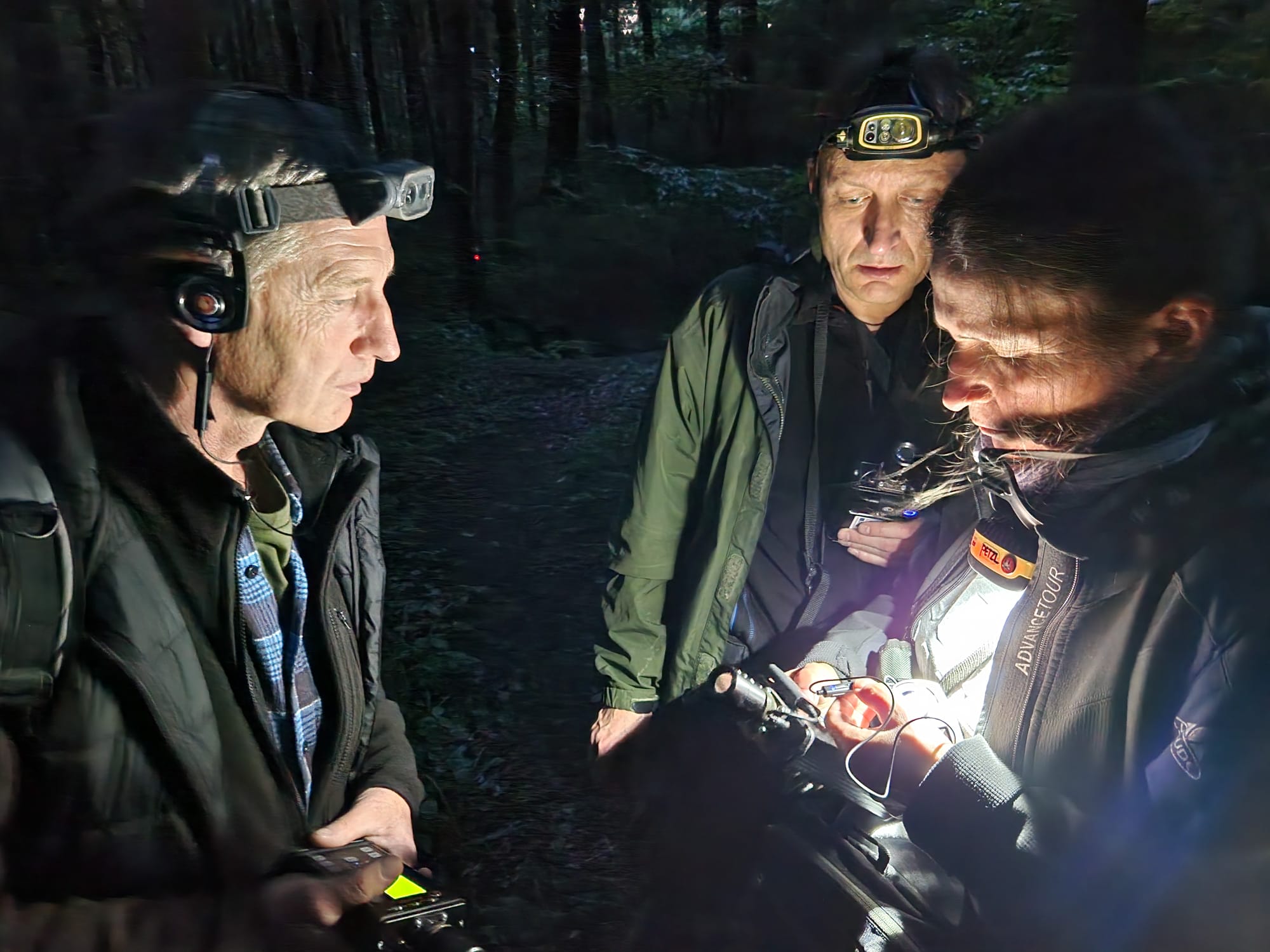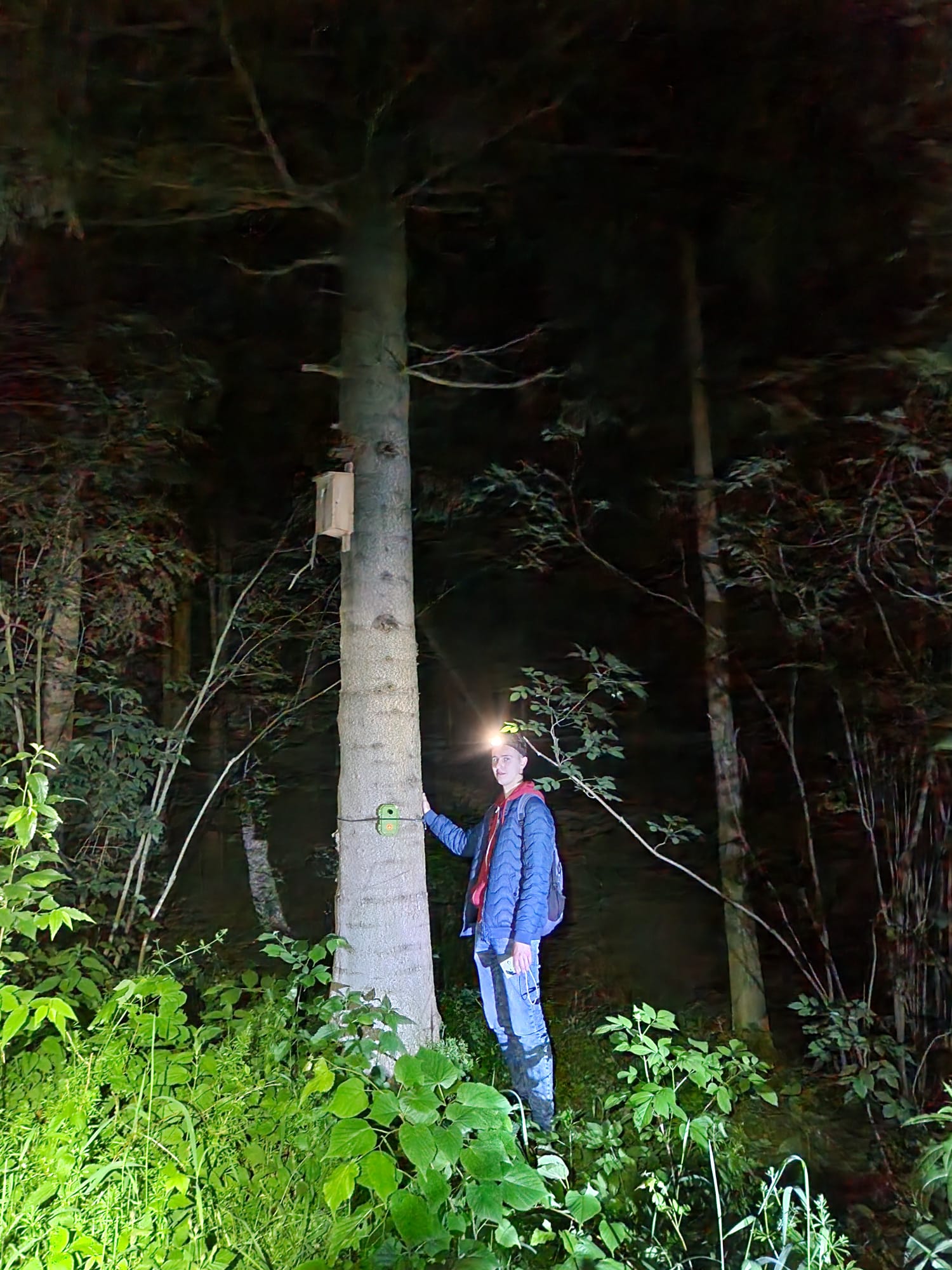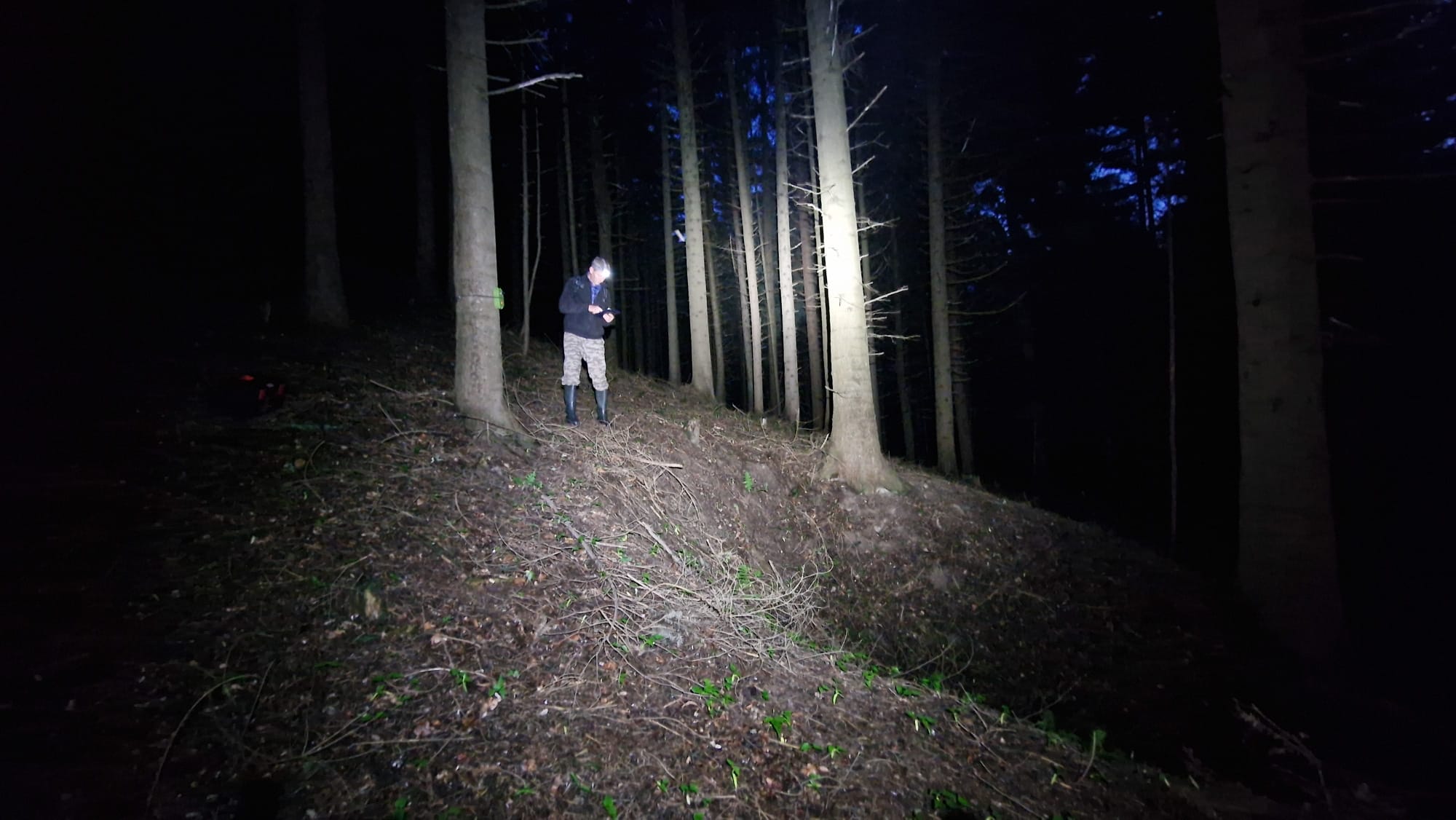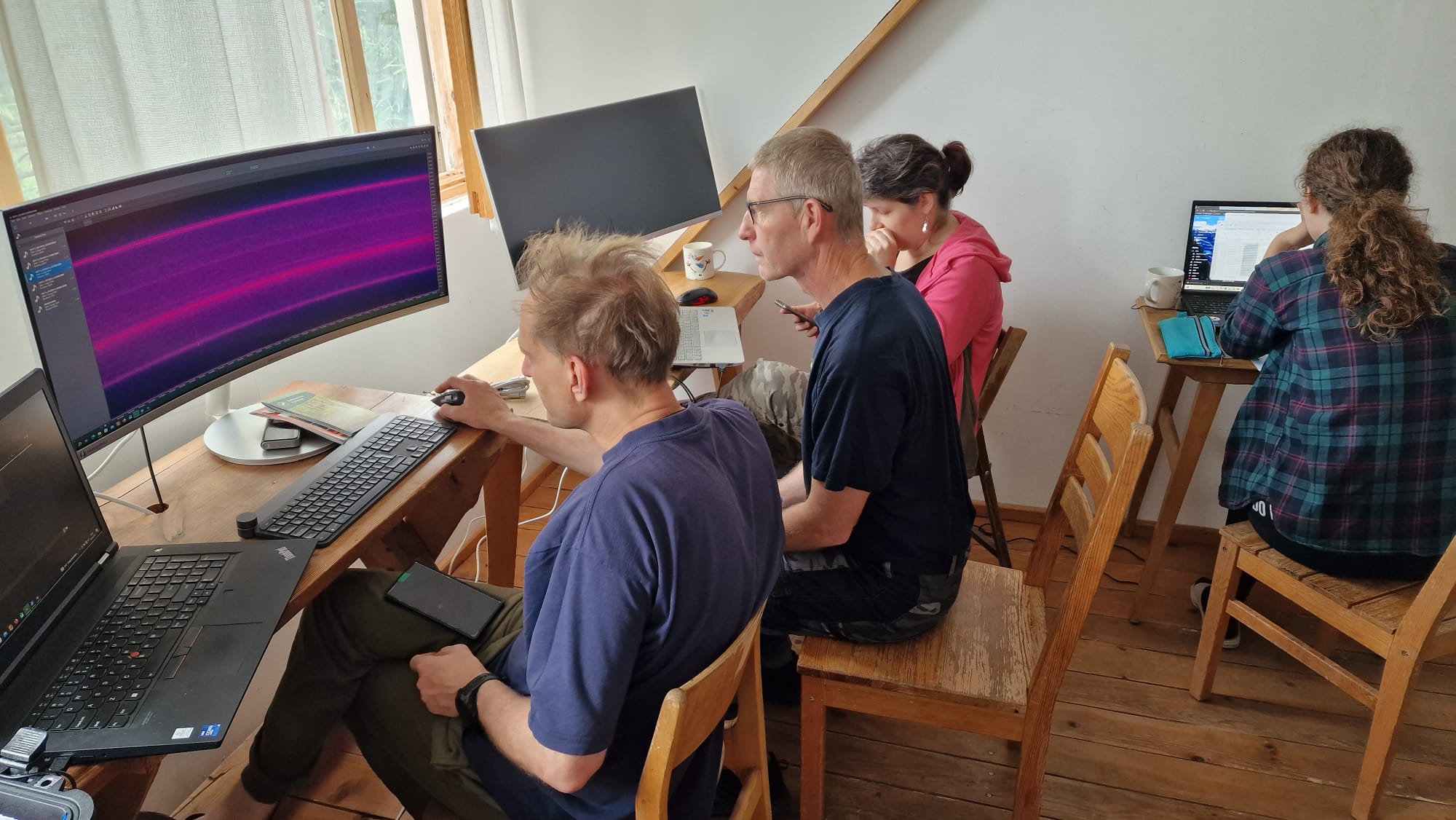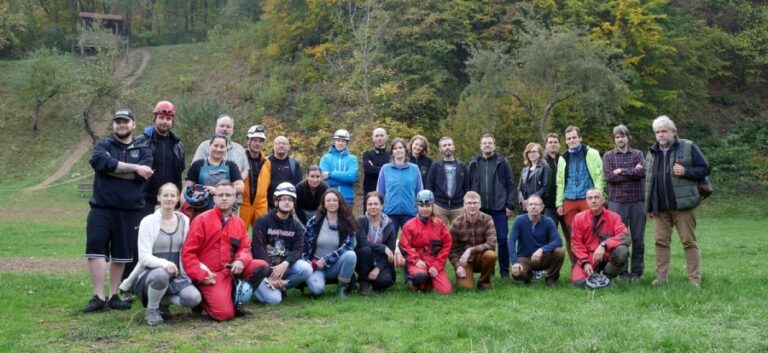In 2022, the project team designated two sites in the Lower Silesian Province, where the construction of new infrastructure for bats then began. This year, four areas will be inventoried, where sites will be designated for the construction of four towers intended for breeding colonies of Lesser Horseshoe Bats and accompanying temporary shelters, called huts. In the first stage, searches are being carried out in the Dukla and Rymanów Forest Districts, where an artificial wintering site will also be constructed, due to the lack of suitable hibernation opportunities in the area.
The construction of new infrastructure for bats will create conditions in the forest for the colony to function in optimal conditions. The animals will be close to feeding grounds and will not have to fly through dangerous places such as roads and human settlements.
Biologists are looking during the day for sites with features favourable to the functioning of flying mammals, in order to check at night which ones are actually used by the bats. Promising sites include forest edges, watercourses and reservoirs, rocks and clearings. The specific and varied conditions mean that more food is found here and it is also easier for the animals to orientate themselves in space. Checking at night where bats are actually hunting requires sophisticated equipment to hear ultrasound and see in the dark. In addition to several observers, photo traps and ultrasound recorders are used. The recordings from these devices are analysed to complement the direct observations made by the researchers.
In this way, Habitat Assessment Reports are produced describing the entire area under analysis and suggesting alternative locations for new infrastructure. It remains to take into account other factors such as forestry plans, the possibility of heavy machinery access and the safety of the structures.


